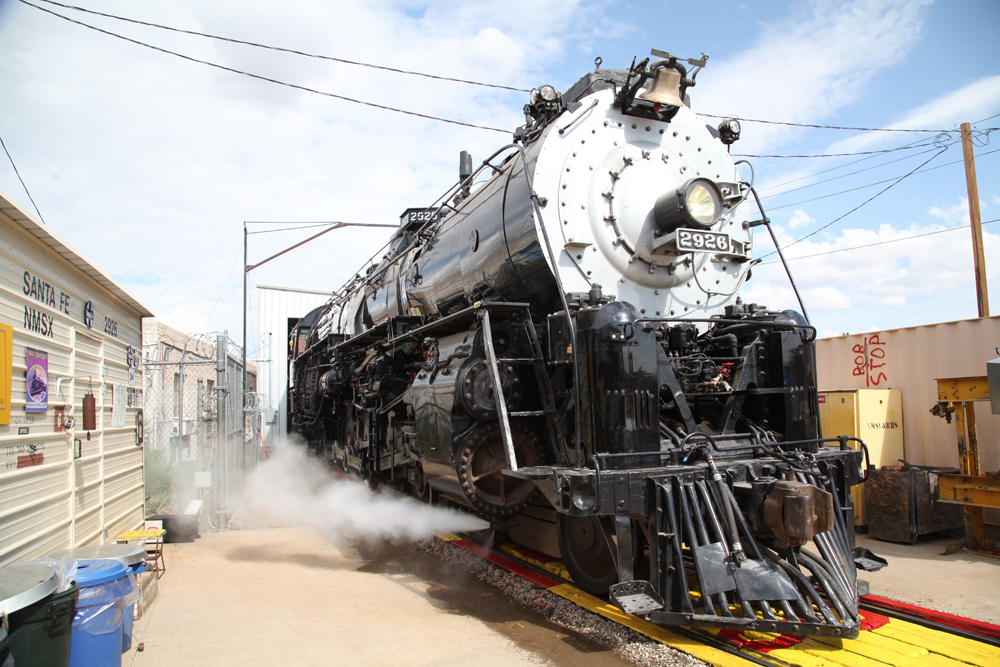
ALBUQUERQUE, N.M. — Steam enthusiasts celebrated last month when Santa Fe 4-8-4 No. 2926 emerged from a 20-year overhaul on July 24 to move under its own power for the first time since 1953. That major milestone is good news for the 1944 Baldwin and a great accomplishment for the volunteers of the New Mexico Steam Locomotive & Railroad Historical Society, who have put tremendous effort and finances into the project.
Now, after 200,000 volunteer hours and an investment of $3.5 million, there is more hard work ahead before anyone even thinks about taking the locomotive out for a run.
Dr. Mike Hartshorne, president of the Santa Fe project, says ahead for the engine is the completion of the jacketing and insulation. On debut day, the portion of the boiler closest to the cab was still exposed. Otherwise, there’s little to do to the locomotive itself and plenty to do to get it physically to where it needs to be.
The organization also has to repair grade crossings and track to get the one-million-pound locomotive, among the heaviest 4-8-4s built, to the main line. The organization also must also acquire insurance and negotiate an operating agreement with New Mexico Department of Transportation, over whose tracks the engine would run between Lamy and Belen, a distance of just under 100 miles. Installation of Positive Train Control and outfitting a former Santa Fe tool car are also ahead. None of these are done quickly or cheaply.
Where else would the locomotive run? Mainline excursions over Glorietta Pass and legendary Raton Pass would be ideal, but that depends on Amtrak and BNSF Railway approval, and in recent years Amtrak has only allowed one excursion train on its lines, the Autumn Colors Express in West Virginia.
Another potential lies some 350 miles to the west in northern Arizona. The Santa Fe 2900s were regular visitors to the Grand Canyon, and Grand Canyon Railway would be a receptive host as long as BNSF allows the engine passage. For now, that’s a dream, but it’s good to have big dreams for big engines.
For more information, visit the locomotive restoration website.













I think it was dumb to not be working on operating agreements a long time ago to have them in place now, because as of right now this thing is a massive 3.5 million dollar tea-kettle that happens to be able to move itself.
The work of the volunteers and the donations that went in are seriously at risk of being for nought if BNSF, Amtrak, or NMDOT decide they do not want to play ball.
Two question areas: 1. Could someone knowledgeable explain how you install PTC on a steam locomotive? How do you close the throttle, say, to make a penalty brake application? What else would be unique? Does UP 4014 have PTC, or does the trailing diesel fulfill the obligation? 2. Presume any Amtrak involvement would be to run as an ATK special train and thus under their insurance umbrella, otherwise only BNSF has to be dealt with. Yes?